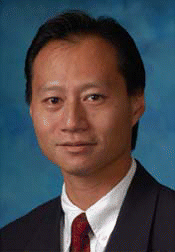Question the patient about constitutional symptoms. Specific questions by the physician may elicit information from the patient that he or she may not have considered pertinent and may not have mentioned otherwise. Specifically, the patient should be queried regarding:
Explore This Issue
April 2008- Dental problems
- Current or recent infections
- Sinus issues
- Cancer risk factors
- Recent trauma
- Gastrointestinal history
- Dysphagia
- Esophagitis
- Reflux
- Past otologic history
- Cardiopulmonary history
- Other constitutional symptoms.
Physical Examination
Once the physician has obtained and documented a complete comprehensive history from the patient, he or she should perform an exhaustive physical examination. The exam should begin with an otologic and neurotologic examination to identify any primary ear pathology. This should be followed by a complete head and neck examination, including palpation of the neck to identify potential thyroid enlargement and any adenopathy or musculoskeletal disorders within the neck. Further head and neck exam should include the structures around the ear, the parotid, nose, and oropharynx. Flexible endoscopy can and should be used as indicated. Cranial nerves should be examined and compared bilaterally.
Gerard Gianoli, MD, of the Ear and Balance Institute in Baton Rouge, LA, considers an audiogram standard in examination of patients presenting with otalgia. He stated, Anyone presenting to my practice complaining of ear pain would get a hearing test. An audiogram can identify even minor hearing loss that the patient may not have even noticed. Additionally, Dr. Gianoli advises that physicians should not hesitate to perform rhinoscopy, nasopharyngoscopy, and indirect laryngoscopy as indicated.
John Li, MD, Past Chairman of the Section of Otolaryngology at Palm Beach Gardens Medical Center, finds the use of topical and injectable anesthesia very helpful in localizing the problem when history and physical examination findings are otherwise inconclusive. The nasal cavity may be sprayed with topical ponocaine or Cetacaine, or 4% lidocaine gargle can be used to anesthetize the oropharynx and larynx, and injectable 1% Xylocaine can be used to identify neuromuscular trigger points and can be useful in the diagnosis of myalgias and neuralgias.2 The idea is to kick the tires and try to stir up the pain, and then numb the area to take away the pain to see if the otalgia resolves, said Dr. Li.
Additional Studies
When history and physical examination fail to definitively identify the source of the patient’s pain, additional studies may be useful.
Dr. Li stressed, It is critically important to try to find a source for the otalgia, because if you do not, the source might be a malignant tumor that comes back to haunt you. You must rule out a malignancy.

Leave a Reply